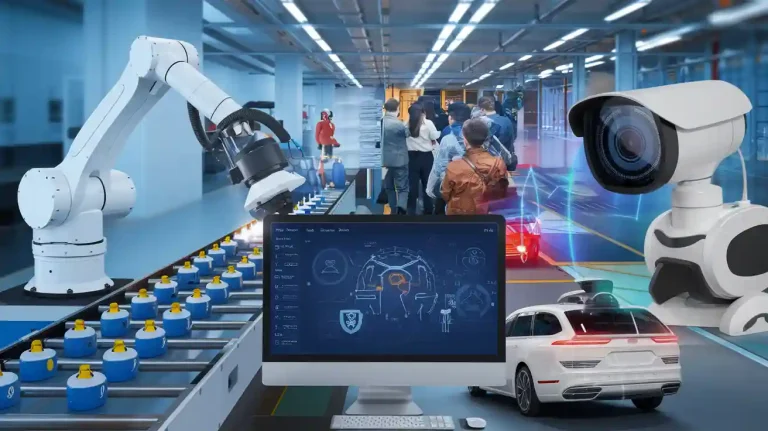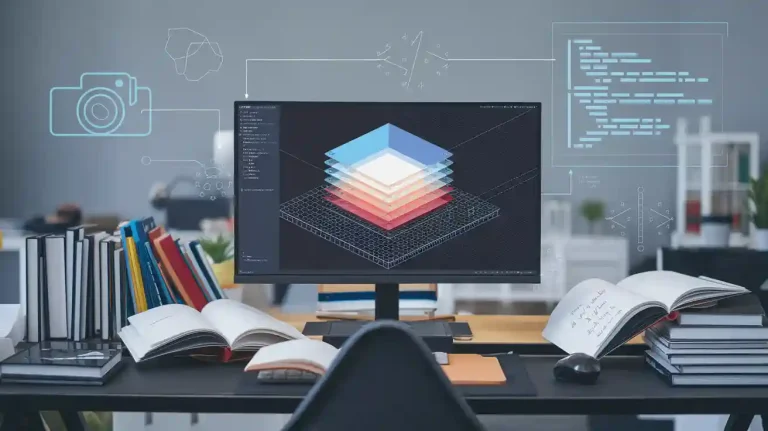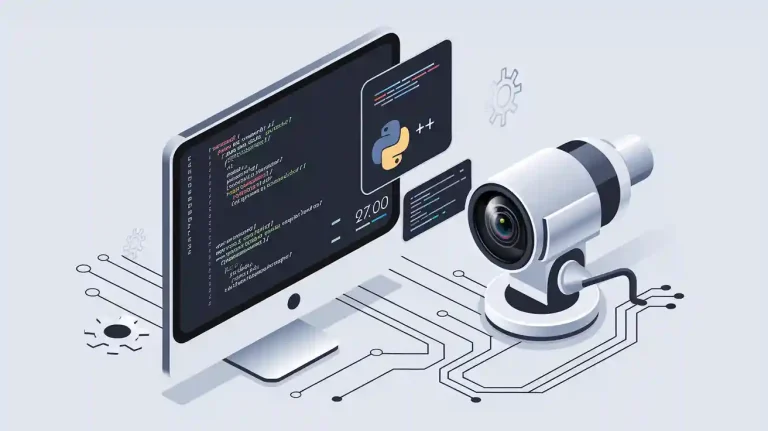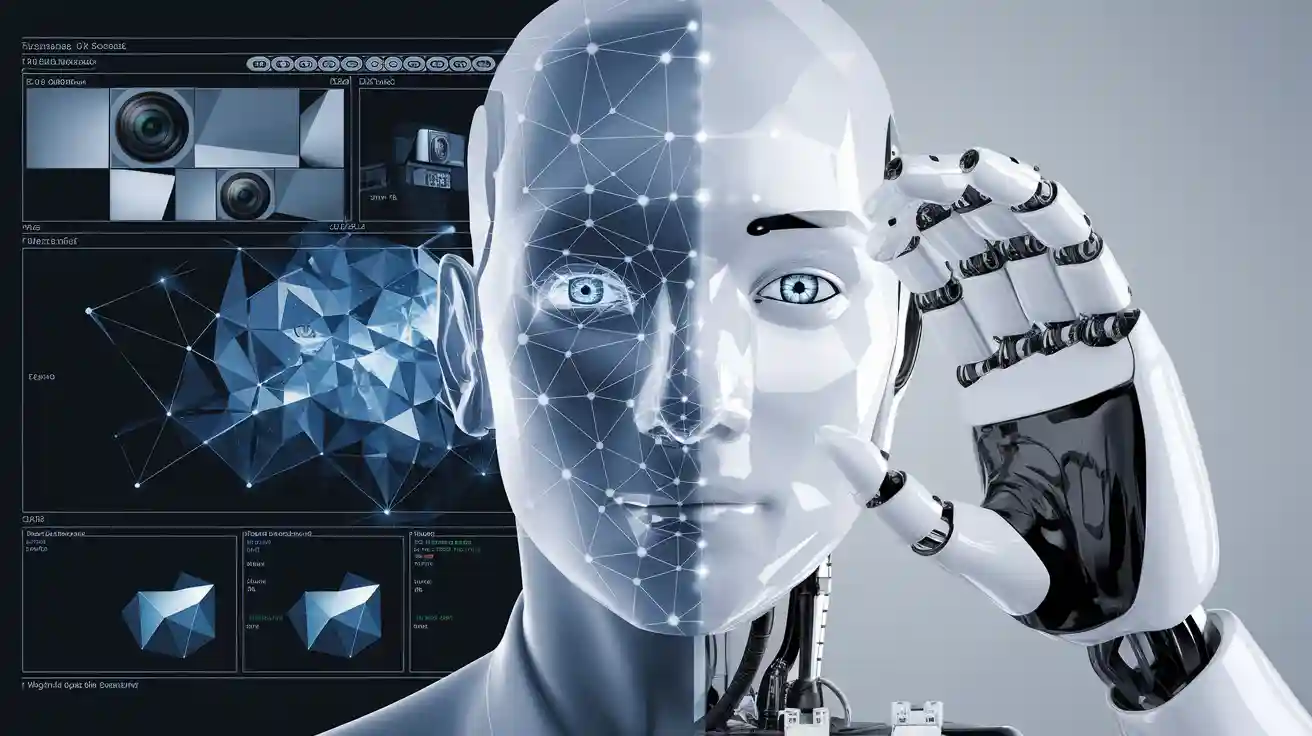
Keypoint detection lets you teach a machine to see important spots in an image, like the corners of your eyes or the joints in a robot arm. In facial recognition, keypoint detection helps computers find your eyes, nose, and mouth. This process gives a keypoint detection machine vision system the power to track movement and recognize objects. In computer vision, models like PoseTrackNet show high accuracy. They reach 92.17% accuracy in pose estimation and 88.73% mean Average Precision for tracking. Keypoint detection forms the base for modern vision and recognition tasks.
Key Takeaways
- Keypoint detection finds important spots in images to help machines understand shapes, positions, and movements.
- This technology improves accuracy and speed in tasks like pose estimation, object tracking, and industrial inspection.
- Deep learning models make keypoint detection faster and more reliable, even in complex or real-time scenarios.
- Keypoint detection works well across many fields, including robotics, healthcare, sports, security, and manufacturing.
- New advances and future trends promise smarter, more flexible systems that handle tough environments and changing scenes.
Keypoint Detection in Machine Vision
What is Keypoint Detection
Keypoint detection helps you find important spots in an image or video. You may also hear people call it keypoint localization or landmark detection. In a keypoint detection machine vision system, you use this process to spot and mark special points on objects. These points can be corners, edges, or other unique features. For example, you might want to find the tip of a fish’s nose, the corner of a box, or the joint in a robot’s arm.
You can measure how well a keypoint detection system works by looking at several factors. These include how many keypoints it finds, how close the detected keypoint locations are to the real spots, and how fast the system works. Many systems use deep learning to improve accuracy and speed. For example, an improved YOLOv5-keypoint framework uses multi-attention mechanisms to find keypoints on objects. This system can measure fish dimensions with over 97% accuracy and works at real-time speeds of 38 frames per second. You can see some of these technical details in the table below:
| Aspect | Description |
|---|---|
| Keypoint Detection Method | Improved YOLOv5-keypoint framework with multi-attention mechanisms |
| Feature Point Recognition | Customizable number and location of feature points (landmarks) |
| Performance Metrics | Precision, Recall, Average Precision (0.9781) |
| Measurement Accuracy | Over 97% compatibility with manual measurements |
| Processing Speed | Real-time speed of 38 frames per second on NVIDIA RTX A4000 |
| Application Context | Fish dimension measurement, adaptable to various aquacultural species and other objects |
| Additional Technical Detail | Incorporation of SimAM attention mechanism for improved accuracy and speed |
You use keypoint detection in many computer vision tasks. It helps you find keypoint locations on objects, which is important for measuring, tracking, and understanding what is in an image. In a keypoint detection machine vision system, you can quickly spot and use these points for further analysis.
Role of Keypoints
Keypoints play a big role in how you use computer vision. When you find keypoints, you give your system the ability to understand the shape and position of objects. For example, you can use keypoint detection to track a person’s body joints, find facial landmarks, or spot features on a moving car. These points help you recognize objects, follow their movement, and even measure their size.
You can see the power of keypoint detection in real-world systems. For gesture recognition, the SFG-YOLOv8 model uses advanced features to find small keypoints on hands, even in busy backgrounds. This model works fast and accurately, making it useful for mobile devices and complex scenes. In another example, a deep learning system for dairy cows uses keypoint detection to spot signs of lameness. It finds keypoint locations on the cow’s body and reaches over 90% accuracy in real-time. This shows that keypoint detection works well in many machine vision applications, not just in labs but also on farms and in factories.
You use keypoint detection to make your machine vision system smarter and more flexible. By finding keypoints, you help your system recognize objects, track their movement, and make decisions based on what it sees. This process forms the backbone of many computer vision tasks, from object recognition to pose estimation. When you use keypoint detection, you unlock new ways to interact with the world through machines.
Keypoint Detection Process
The keypoint detection process helps you find important points in images. You start with an image or video. The system looks for special spots, like corners or edges, that stand out from the rest. These spots are called keypoints. You use these keypoints to understand what is in the image and how objects move or change.
Keypoint Detection Techniques
You can use different keypoint detection techniques to find keypoints in images. The process usually follows these steps:
- Image Capture: You take a picture or record a video. This gives you the data you need for detection.
- Preprocessing: You may adjust the image to make it clearer. You can change the brightness or remove noise.
- Detection: The system scans the image to find keypoints. It looks for places that are different from their surroundings.
- Description: For each keypoint, the system creates a small summary. This helps you tell one keypoint from another.
- Matching: You compare keypoints from different images. This helps you track objects or recognize them in new scenes.
Tip: You can use keypoint detection workflows to solve many problems, like tracking a soccer ball or measuring a fish.
Researchers have tested these techniques on real datasets. For example, a study used the AIFASHION and Human3.6M datasets to check how well keypoint detection works. They measured how close the detected keypoints were to the real spots using a metric called Normalized Error. The results showed that advanced methods, like multi-task learning with hourglass networks, can find keypoints more accurately than older methods.
Algorithms and Deep Learning
You can use classic algorithms or deep learning to find keypoints. Classic algorithms include SIFT (Scale-Invariant Feature Transform) and SURF (Speeded-Up Robust Features). These algorithms look for keypoints by finding spots that do not change much when you rotate or scale the image. SIFT and SURF help you with image matching and object recognition. They work well for many tasks, but they can be slow or miss keypoints in complex scenes.
Deep learning has changed how you do keypoint detection. You can use neural networks to learn what keypoints look like. These networks can find keypoints even in hard cases, like when objects are partly hidden or in poor lighting. For example, hourglass-based networks use layers that shrink and grow the image to find keypoints at different scales. Multi-task learning lets the system find keypoints and classify objects at the same time. This makes detection faster and more accurate.
You use matching to compare keypoints from one image to another. This helps you track movement or recognize objects. Deep learning models can learn to match keypoints better than classic algorithms. They can handle changes in pose, lighting, and background.
| Method | Speed | Accuracy | Use Case |
|---|---|---|---|
| SIFT | Moderate | High | Image matching, tracking |
| SURF | Fast | Medium | Object detection |
| Deep Learning | Very Fast | Very High | Pose estimation, real-time tracking |
You can see that deep learning models now lead in both speed and accuracy. They help you build keypoint detection systems that work in real time and handle complex scenes.
Benefits of Keypoint Detection
Accuracy and Speed
You can rely on keypoint detection to boost both accuracy and speed in machine vision systems. When you use keypoint detection, you help machines find the exact spots they need to track or measure. This leads to better results in many fields. For example, in robotic machining, vision-based pose estimation with LSTM RNN reduces path tracking error from 0.744 mm to just 0.014 mm. In healthcare and sports, the MediaPipe framework increases accuracy by 20% and cuts processing time by 30%. These improvements mean you get faster and more precise results.
Here is a table showing how keypoint detection improves accuracy and speed in different applications:
| Application Area | Method/Technology Used | Measurable Improvement / Accuracy Achieved |
|---|---|---|
| Robotic Machining | Vision-based pose estimation with LSTM RNN | Path tracking error reduced from 0.744 mm to 0.014 mm |
| Healthcare & Sports | MediaPipe framework | 20% increase in accuracy, 30% reduction in processing time |
| Industrial Milling Robot | AICON MoveInspect HR stereo camera system | Positioning errors below 0.3 mm |
| Dynamic Path Correction | Position-based visual servoing with Kalman filter | Tracking accuracy ±0.20 mm (position), ±0.1° (orientation) |
You also see improvements in performance indicators. For example, mean average precision (mAP) increases by up to 7.1%. Some systems reduce the number of parameters by 70%, and you can achieve speeds of 155 frames per second. These numbers show that keypoint detection makes your system both fast and accurate.
Robustness and Versatility
Keypoint detection gives your machine vision system the power to handle many challenges. You can use keypoint detection in different lighting, with moving objects, or when parts of the object are hidden. Deep learning models, like Spatial-Temporal Graph Convolutional Networks, help you extract features and improve accuracy in dynamic scenes. You can also combine data from thermal, depth, and color cameras to detect keypoints even when the environment is tough.
- You can use lightweight models for real-time detection on mobile devices.
- Occlusion-aware features and masking strategies help reduce errors, making your system more reliable.
- Adjusting camera height and angle lowers occlusion and projection distortion, which improves detection accuracy.
Tip: You can use keypoint detection in many fields, such as robotics, healthcare, sports, and industrial inspection. This versatility means you can solve a wide range of problems with one approach.
You can trust keypoint detection to work in real time, even when the scene changes quickly. This makes it a strong choice for safety and industrial tasks where speed and accuracy matter most.
Applications of Keypoint Detection Machine Vision System
Keypoint detection powers many applications in machine vision. You can use it to solve real-world problems in pose estimation, object recognition, tracking, and industrial inspection. These applications help machines understand and interact with the world.
Pose Estimation
You use pose estimation to find the position and orientation of objects or people. In human pose estimation, keypoint detection locates joints like elbows, knees, and shoulders. This helps you track how a person moves in sports, healthcare, or animation. You can also use pose estimation for robots. By finding keypoints on robot arms, you guide their movement with high accuracy. Many applications rely on pose estimation to improve safety and efficiency. For example, motion tracking in sports uses human pose estimation to analyze athletes’ movements. You can see pose estimation in action when a game tracks your body for virtual reality.
Object Recognition and Tracking
Keypoint detection improves object recognition and tracking in many applications. You can identify objects by finding unique points on them. This helps you tell one object from another, even if they look similar. Tracking uses keypoints to follow objects as they move through a scene. In security cameras, you use tracking to follow people or vehicles. In wildlife research, you track animals by detecting keypoints on their bodies. Object recognition becomes more accurate when you use keypoint detection. Recent experiments show that adding keypoint regression to YOLOv4 increases average precision, especially for small objects. The chart below shows how keypoint detection boosts object recognition metrics:

You can see that applications in object recognition and tracking benefit from higher accuracy and better performance.
Industrial Inspection
You can use keypoint detection for industrial inspection in many applications. Factories use it to check the quality of products. For example, in rebar inspection, keypoint detection finds crosspoints and measures spacing. This ensures that construction materials meet safety standards. The system uses advanced modules to filter out background noise and works in real time. You get high accuracy and reliability, even in tough environments. The table below shows how well keypoint detection works in industrial inspection:
| Metric | Value | Description |
|---|---|---|
| Mean Average Precision (mAP) | 98.5% | Accuracy of 3D keypoint localization in rebar inspection |
| Average Error in Spacing | 1.26 mm | Precision of rebar spacing measurement, showing robustness for quality control |
You can trust keypoint detection to handle interference and deliver precise results. Many applications in manufacturing now use these systems to automate quality checks and improve safety.
Note: Keypoint detection supports a wide range of applications, from pose estimation to object recognition, tracking, and industrial inspection. You can use it to solve problems in sports, healthcare, security, and manufacturing.
Challenges and Trends
Current Limitations
You may notice that keypoint detection systems face real challenges in tough environments. When you add blur, dim lighting, or noise to an image, the system struggles to find the right points. The table below shows how detection scores drop under different conditions:
| Condition | Detection Score (Best) | Detection Score (Worst) | False Alarm Rate |
|---|---|---|---|
| Rotation | 1.0 | 1.0 | Low |
| Blur | 1.0 | 0.605 | Low |
| Dimming | 1.0 | 0.783 | Low |
| Gaussian Noise | 1.0 | 0.071 | High |
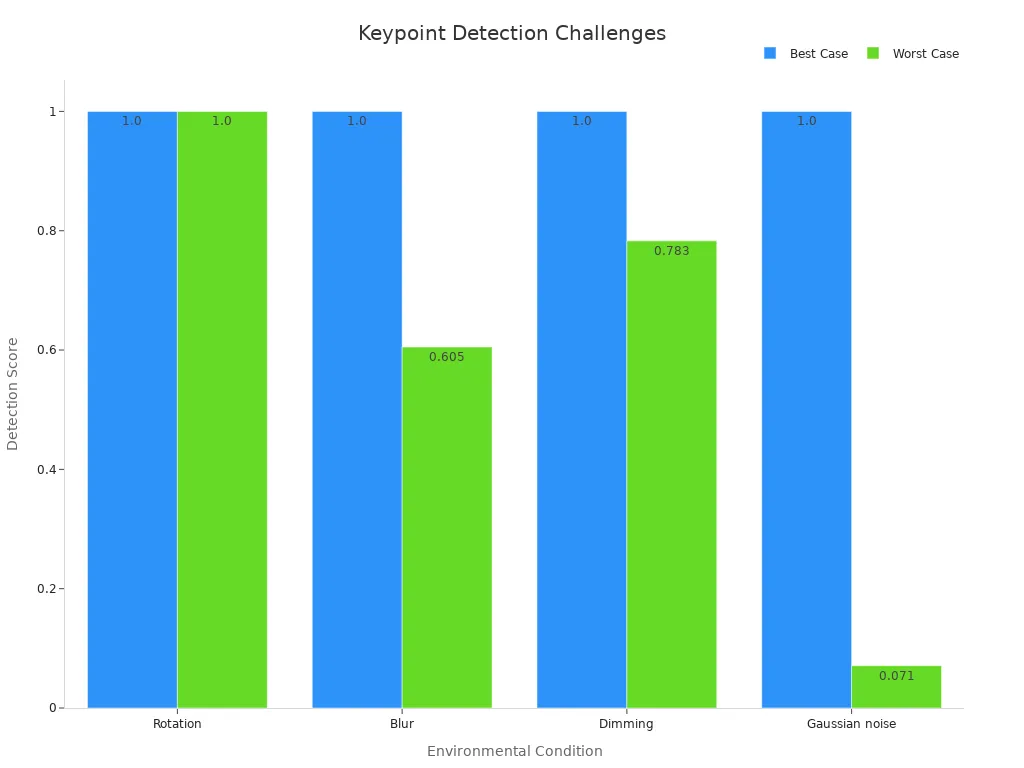
You can see that Gaussian noise causes the biggest drop in performance. High blur and dimming also make detection much harder. These problems limit how well your system works in real-world settings.
Recent Advances
You benefit from new deep learning models that make keypoint detection faster and more accurate. Models like YOLOv8 use advanced neural networks to reach speeds of up to 178 frames per second on powerful GPUs. Even on smaller devices, you get real-time results. These models keep high accuracy, so you can trust them for important tasks.
Researchers have also improved how networks learn. Dilated convolution lets the model see more of the image without losing detail, which increases accuracy by about 2%. Online Hard Keypoint Mining (OHKM) helps the system focus on hard-to-find points, making detection more robust. High-resolution networks with feature fusion help you find small or hidden keypoints. These advances lower pose estimation errors and help your system work better in tough scenes.
Future Directions
You will see exciting changes in the future of keypoint detection. New research points to several trends:
- Unsupervised learning lets systems find keypoints without labeled data. This helps you save time and money.
- Recurrent neural networks, like LSTMs and ConvLSTMs, improve video prediction and motion tracking.
- Generative models, such as GANs and VAEs, help predict future frames and handle uncertainty.
- Graph neural networks support better motion prediction.
- You can use metrics like Mean Square Error (MSE), Structural Similarity Index (SSIM), and Peak Signal-to-Noise Ratio (PSNR) to measure prediction quality.
- New models, like SEE-Net, improve how systems understand the order of events in videos.
These trends show that you can expect smarter, more flexible systems that work well in changing environments.
Keypoint detection gives you the tools to make machine vision systems smarter and faster. You see better accuracy and more reliable results in real-world tasks. As new techniques appear, you will shape the future of automation, robotics, and AI.
Imagine what you can build when machines see and understand the world as you do. Keypoint detection will open new doors across many industries.
FAQ
What is the main purpose of keypoint detection?
Keypoint detection helps you find important spots in images. You use it to help machines understand shapes, positions, and movements. This process supports tasks like tracking, measuring, and recognizing objects.
How does keypoint detection improve object tracking?
You use keypoints to follow objects as they move. Keypoints act like markers. They help your system keep track of the same object, even if it changes position or shape.
Can keypoint detection work in real time?
Yes! Many modern systems use deep learning to detect keypoints quickly. You can get real-time results, which means your system can react fast in applications like robotics or video analysis.
What are some common challenges in keypoint detection?
You may face problems with poor lighting, blurry images, or objects that are partly hidden. These issues can make it hard for your system to find the right keypoints.
Where do you see keypoint detection used most often?
- Robotics
- Healthcare
- Sports analysis
- Security cameras
- Industrial inspection
You find keypoint detection in many fields. It helps machines see and understand the world around them.
See Also
The Role Of Feature Extraction In Machine Vision
A Comprehensive Guide To Object Detection In Vision
Essential Principles Behind Edge Detection In Vision
Benefits And Features Of Machine Vision In Medical Devices
Exploring Pixel-Based Machine Vision In Today’s Applications







